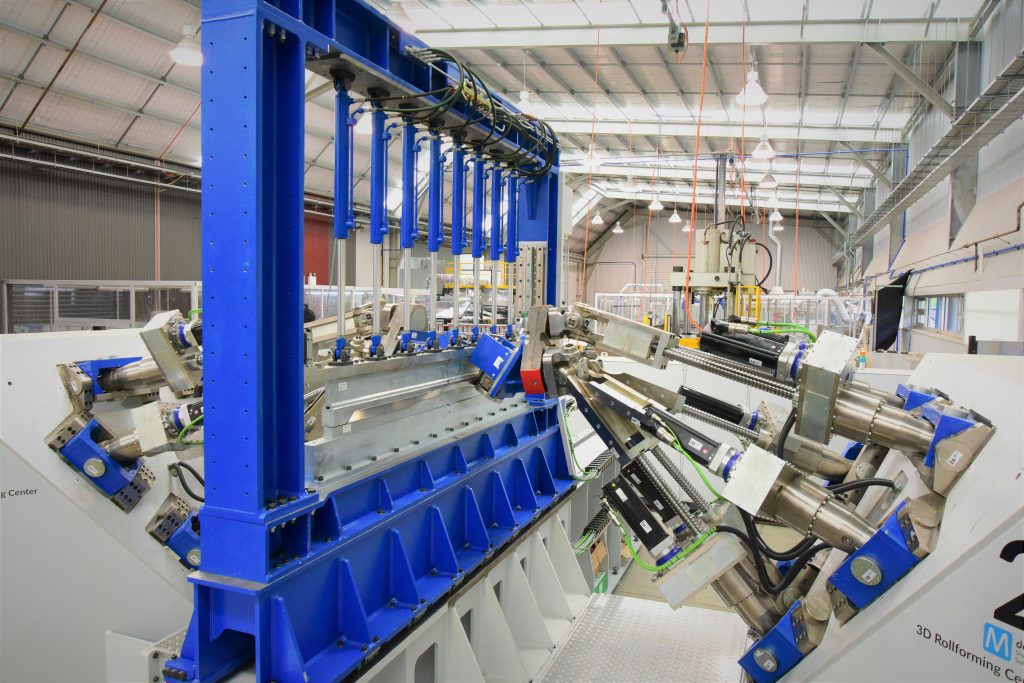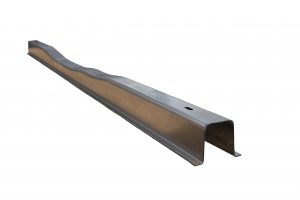Flexible Roll Forming
A new $1.5 million facility at Deakin University’s Institute for Frontier Materials enables for the first time the roll forming of metal components that combine variations in width and depth over the length of the part.
In collaboration with our Industry Partner data M, we put the new Flexible Roll Forming equipment into operation.
Background:
Conventional roll forming is limited to long sections of continuous profile. IFM’s long-term research partner data M Sheet Metal Solutions (Germany) has recently developed the flexible roll forming process where the roll stands are no longer fixed in space but allowed to follow a part contour to manufacture components with variable shape along the length. The process enables the forming of high strength/low ductility materials with higher component complexity compared to conventional roll forming. Numerous part families can be formed with one and the same tool set and this leads to high process flexibility and potential costs savings compared to conventional forming methods such as cold stamping where one specific tool set is required for each component shape.
Up to now, flexible roll forming has been restricted to components of variable width but has found widespread application in the building and heavy truck industry. Supported by a recent LIEF grant, IFM has established the next generation 3D roll former – developed and supplied by the German engineering company data M Sheet Metal Solutions. This one of a kind $1.5 million forming-facility enables for the first time the roll forming of components that combine variations in width and depth over the length of the part. The facility consists of a blankholder system that clamps a pre-cut sheet between a top and a bottom die. In contrast to a conventional or flexible roll forming line, there is only one roll forming stand on each side of the sheet; this consists of the top and bottom rolls attached to a hexapod for articulation of the forming rolls in all 6 DOF. The blankholder system drives back and forth through the two forming stands on a leadscrew to form the material into shape. This world’s first 3D roll forming facility will be used for proof of concept studies on the flexible roll forming process, rapid prototyping and the low volume manufacture of complex profiles from hard to form materials for applications in the automotive, aerospace, truck and rail industry.




